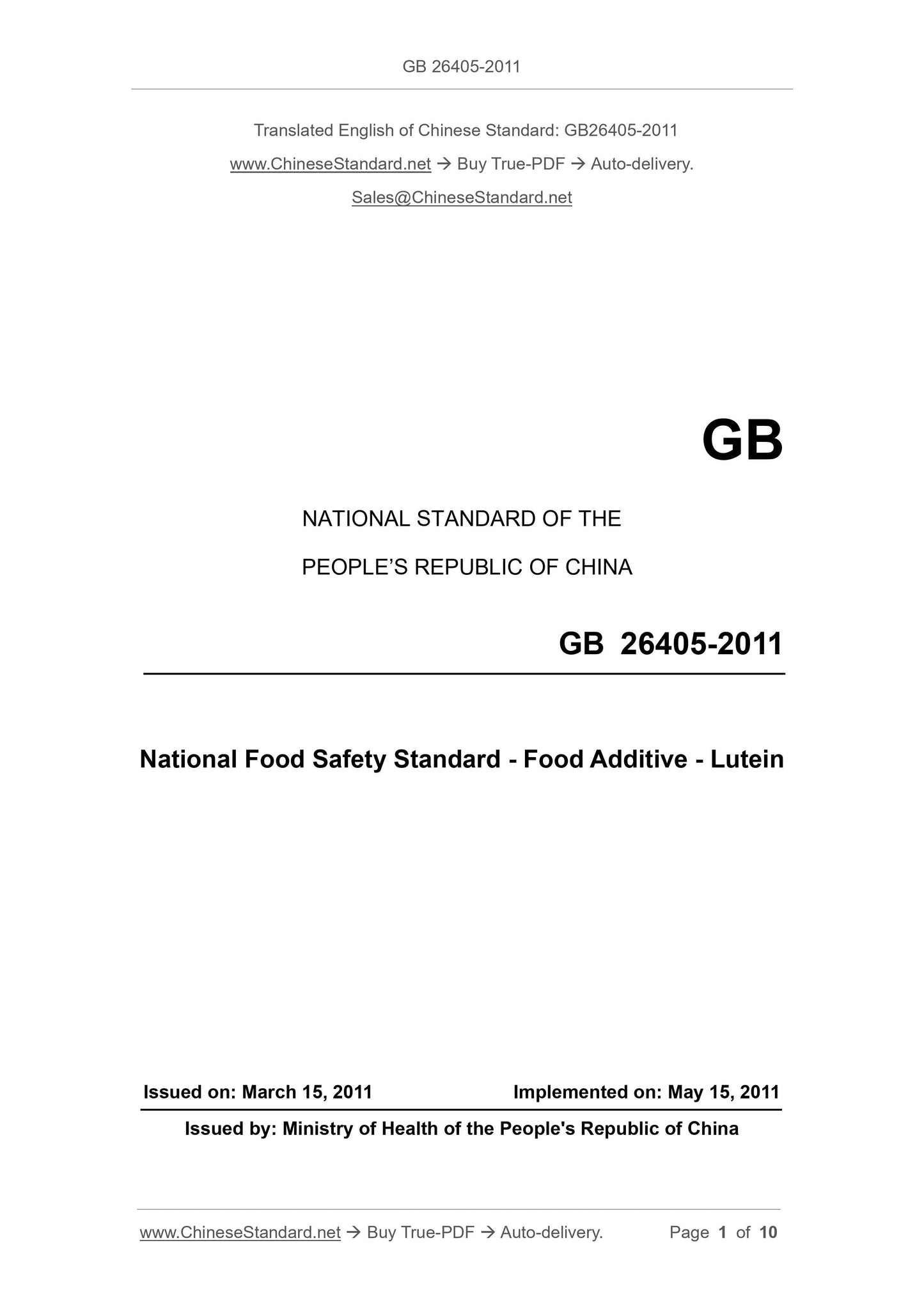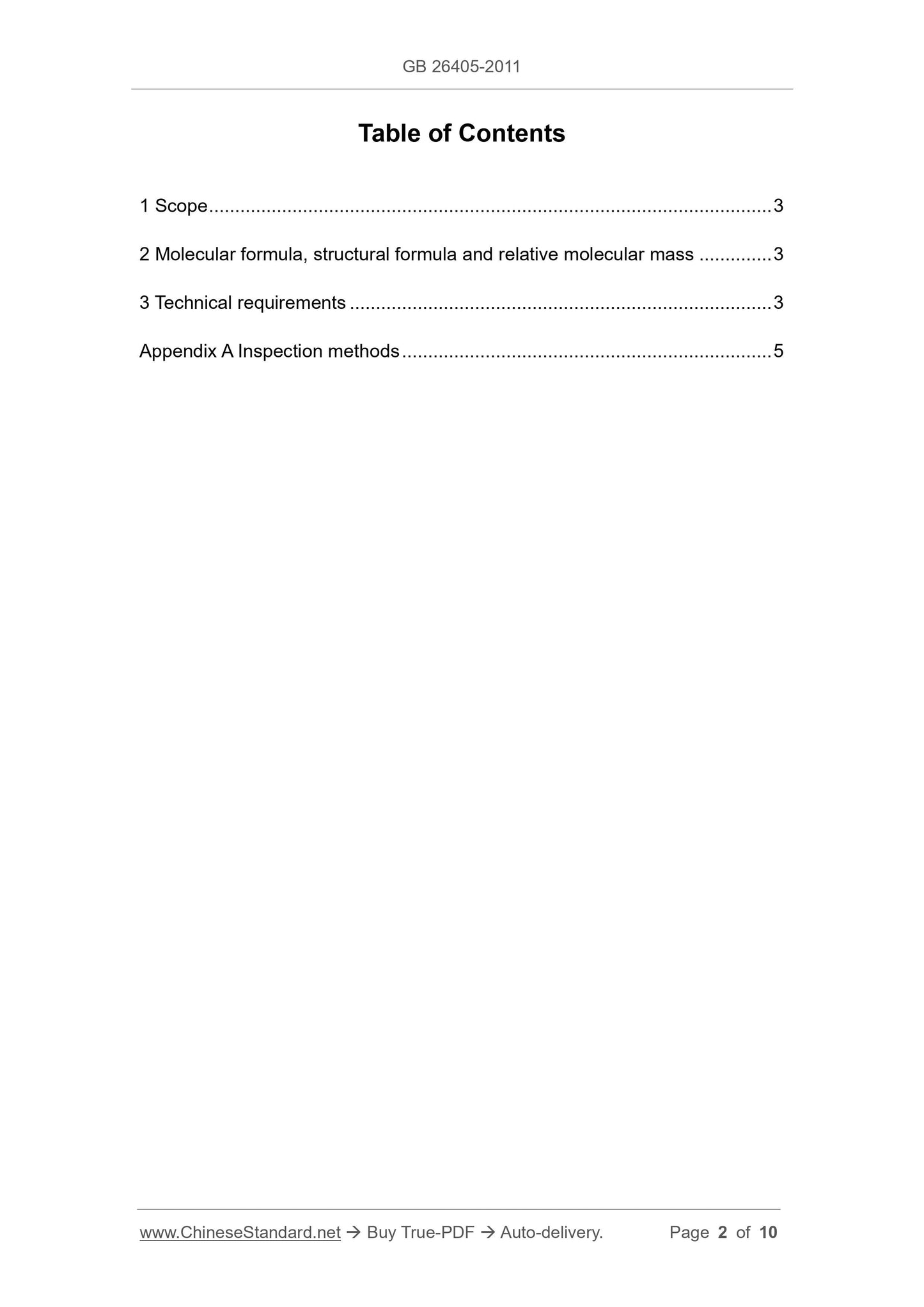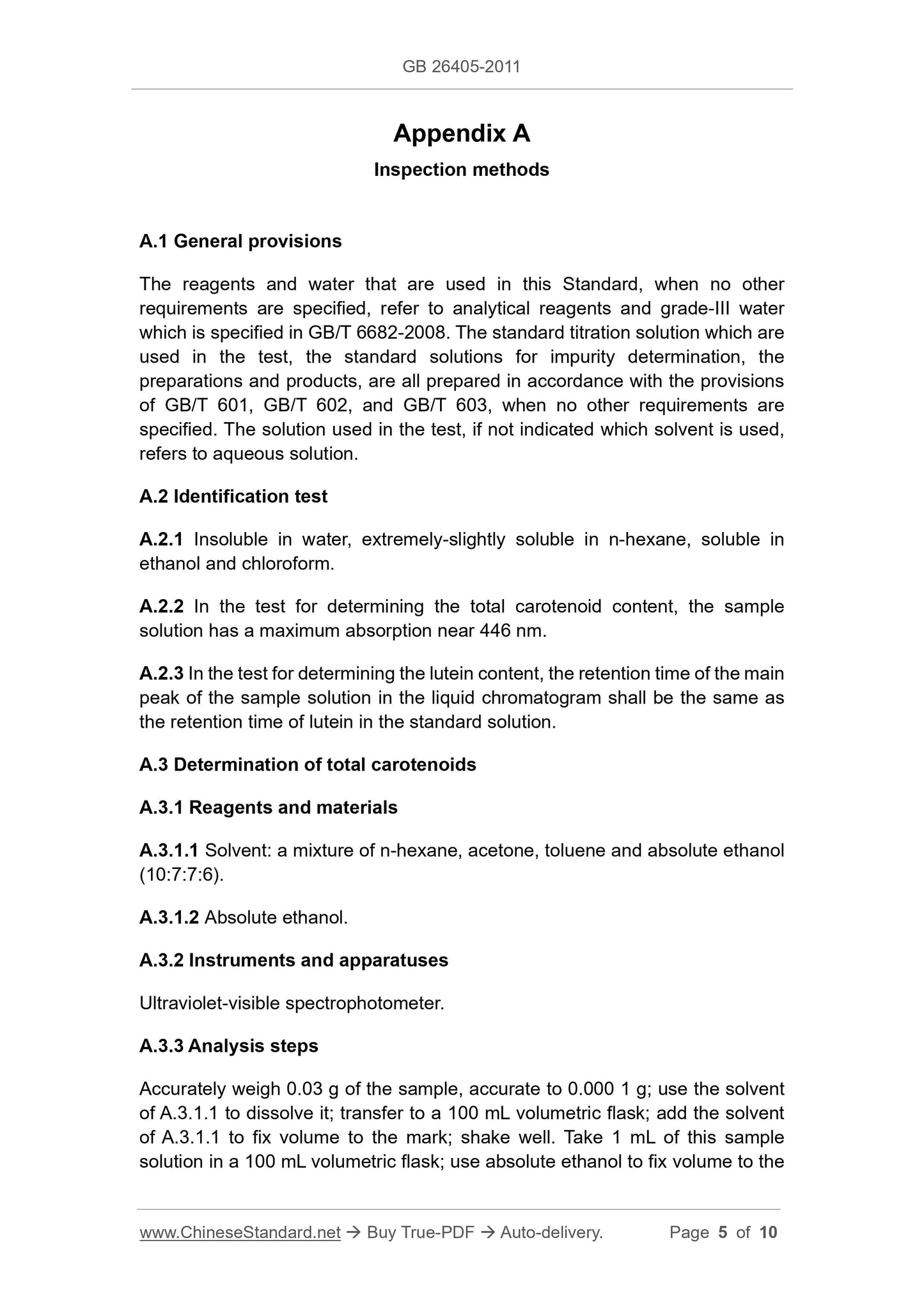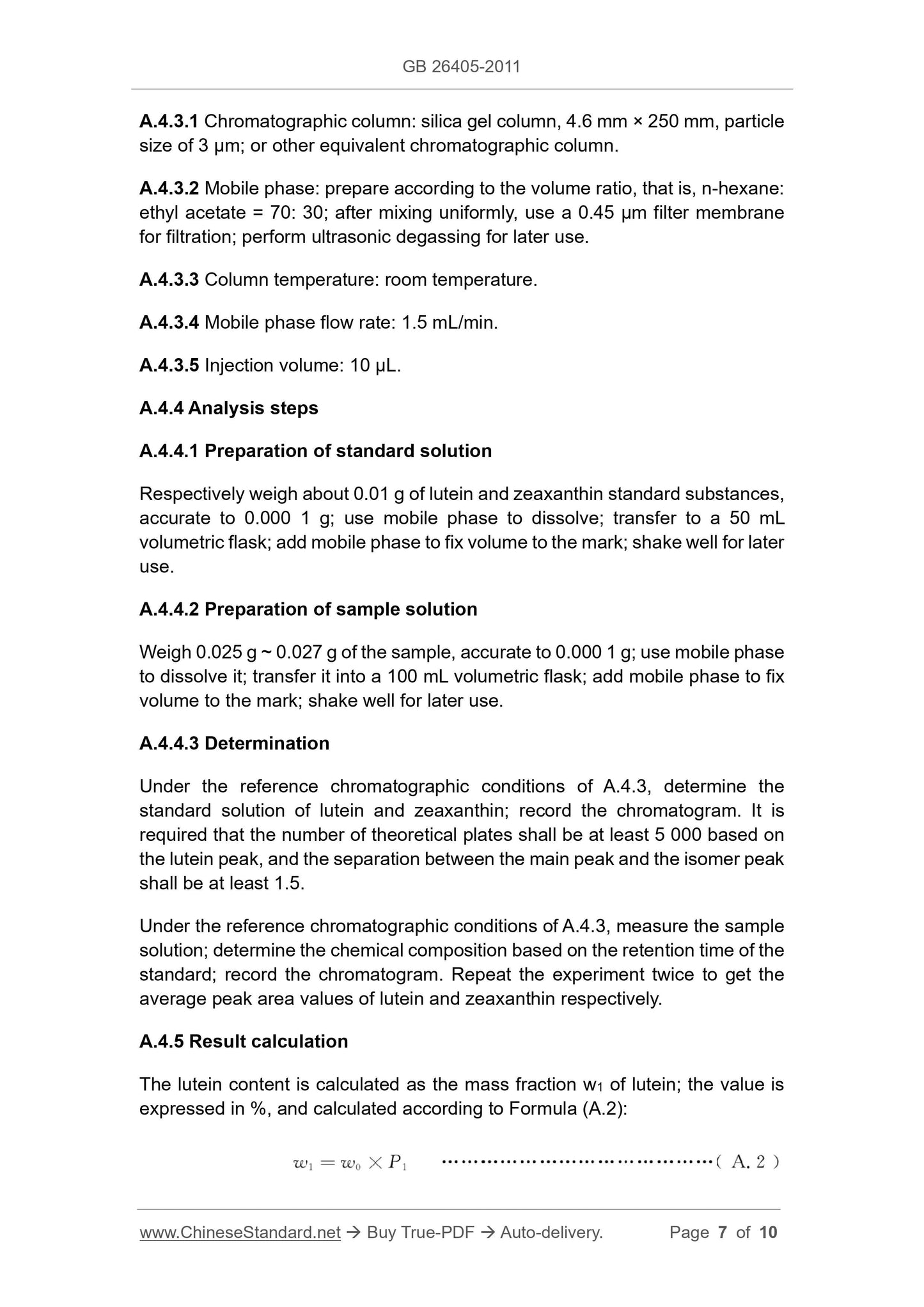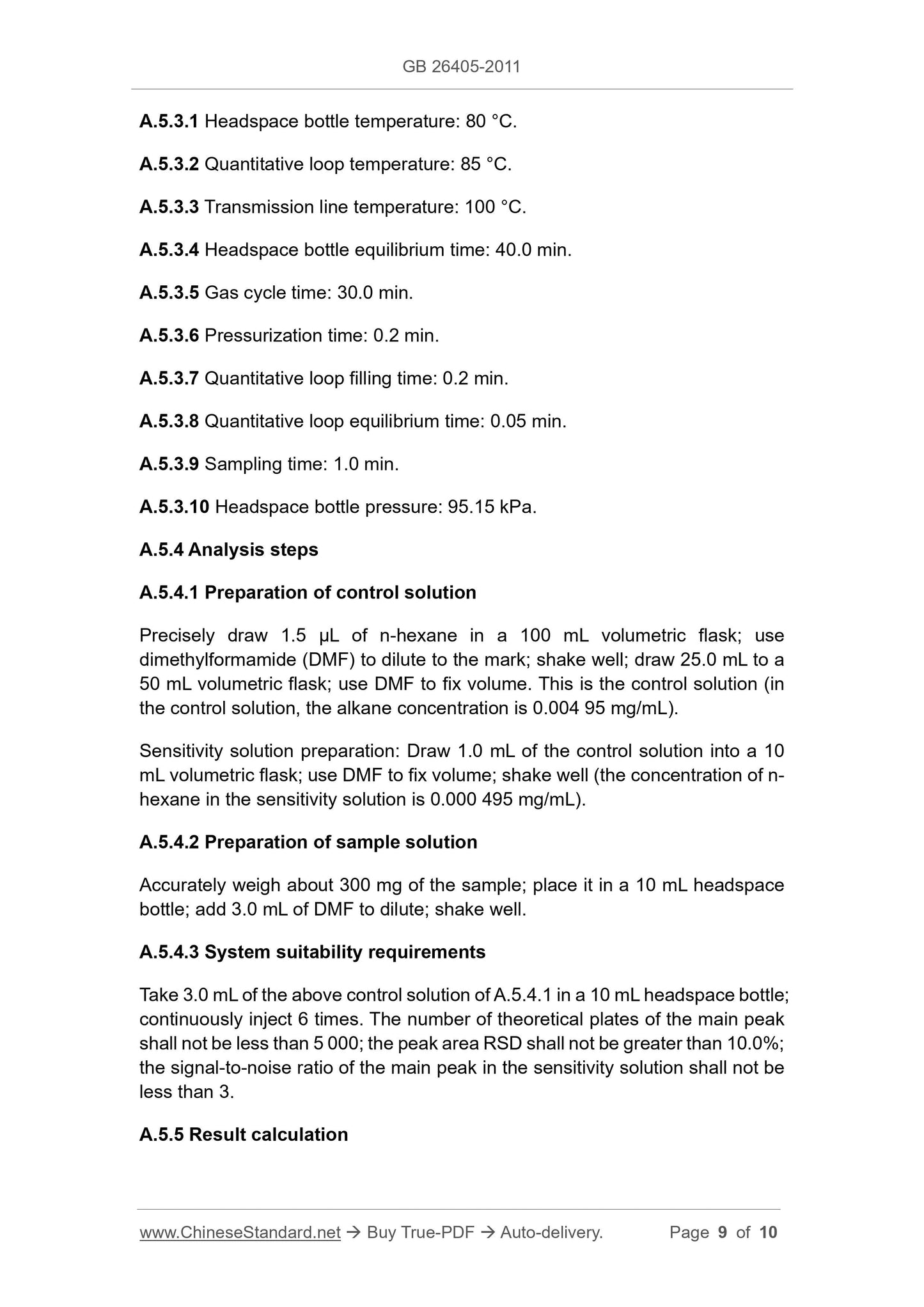1
/
of
6
www.ChineseStandard.us -- Field Test Asia Pte. Ltd.
GB 26405-2011 English PDF
GB 26405-2011 English PDF
Regular price
$70.00
Regular price
Sale price
$70.00
Unit price
/
per
Shipping calculated at checkout.
Couldn't load pickup availability
GB 26405-2011: National food safety standard - Food additives - Lutein
Delivery: 9 seconds. Download (and Email) true-PDF + Invoice.Get Quotation: Click GB 26405-2011 (Self-service in 1-minute)
Newer / historical versions: GB 26405-2011
Preview True-PDF
Scope
This Standard applies to the food additive lutein, which is made from Tageteserecta L. oleoresin through saponification and extraction. Commercial lutein
products can contain edible vegetable oils, dextrins, antioxidants and other
auxiliary materials, which are used for standardization and other purposes.
Basic Data
| Standard ID | GB 26405-2011 (GB26405-2011) |
| Description (Translated English) | National food safety standard - Food additives - Lutein |
| Sector / Industry | National Standard |
| Classification of Chinese Standard | X40;C54 |
| Classification of International Standard | 67.220.20 |
| Word Count Estimation | 8,859 |
| Date of Issue | 2011-03-15 |
| Date of Implementation | 2011-05-15 |
| Regulation (derived from) | Ministry of Health Bulletin No. 7 of 2011 |
| Issuing agency(ies) | Ministry of Health of the People's Republic of China |
| Summary | This Chinese standard applies to marigold (Tagetes erectaL.) Oil resin as raw material, saponification, extraction of refined food additives lutein. Commercialization of products may contain lutein for standardization purposes of edible vegetable oil, dextrin, antioxidants and other accessories. |
Share
